From shutting down schools in 2020 for a spring break that never ended, to challenging teachers and students statewide with remote learning, the COVID-19 pandemic presented challenges largely unimagined for education. Teachers struggled to find ways to make sure students did not fall behind in their studies, all while combating the normal social problems that contribute to low performance and dropout rates in schools. But they didn’t have to plot this course alone. A variety of nonprofits and foundations in the region worked harder than ever to keep exceptional educational programs running and rise to the demands created by an expansive, unpredictable crisis. The Sarasota-Manatee region’s rich history of philanthropy and community support kicked in to help teachers and students navigate the challenges of the pandemic.
“A lot of our donors are passionate about education,” says Joan McCaw, the grants and scholarships manager for the Manatee Community Foundation. “We have the privilege of letting them know all the opportunities to invest in and get the best results for the students.” Those opportunities weren’t always clear, as leaders had to navigate unprecedented challenges—like aiding the infrastructure to ensure that all students could participate in remote learning, regardless of access to computers and reliable internet service at home. Programs set out to close the digital divide for foreign communities, including those in which many parents don’t speak English (and sometimes lack accessible gateways to speak with school officials). All the while, ongoing programs—such as a nationally recognized effort in Sarasota to simultaneously provide job training to parents and school support to students—continued moving forward. Reading campaigns found ways to deliver books to children. Nonprofit workers fought multifront wars against hunger, school absenteeism and the heightened stress and grief that a deadly airborne virus introduced to children’s lives.
Connecting Online
At the Education Foundation of Sarasota County, the focus of philanthropic efforts has always been on helping teachers serve students—by providing resources that school districts can’t supply on their own or can’t experiment with due to strict state curricula. But direct partnerships with the schools make the mission easier by providing direct access to students through their campuses. Success centers set up at local high schools provided a direct way for foundation officials to reach out to students with scholarship opportunities, and to press them to take advantage of financial aid opportunities by filling out FAFSA requests. That option vanished last spring when students moved to at-home learning. Even when schools reopened in the fall, many did not allow visitors other than essential school personnel. “When COVID hit us, we had to accelerate our community outreach,” says Vigne. “We weren’t sure, at first, if schools would open or be subject to closures.” The Education Foundation set up its own shop to help students. The district established a physical center where high school students could find mentors. These mentors kept students on track to pursue higher education options, even while campus tours were shut down and the intervention of in-school guidance counselors moved out of reach. The LaunchPad4U center also provided a spot where mentors could connect directly with students.
Manatee Community Foundation program organizers, meanwhile, worked overtime to get internet hotspots into rural homes. The effort provided access to remote work options for families while keeping students digitally connected to teachers. McCaw says the Foundation also partnered with the school district to set up a Spanish-language information hotline—geared toward families in which the head of household does not speak English as a first language. Philanthropic leaders worked to ensure that families had the technological resources in their homes to succeed during the pandemic, as well as the ability to make choices about remote or in-classroom instruction based on their needs.
The hope, McCaw says, is that efforts to improve education prospects for students linger well after the virus diminishes. “These programs were COVID-related, but it was also related to the digital divide we are talking about right now,” she says. “Not everyone has computers or access to broadband that gets you on your computer effectively so you are able to work.” CARES money helped school districts deal with such challenges, and foundation support aided efforts to reach directly into neighborhoods—which sometimes involved driving buses into economically disadvantaged areas to make sure those in need received help.
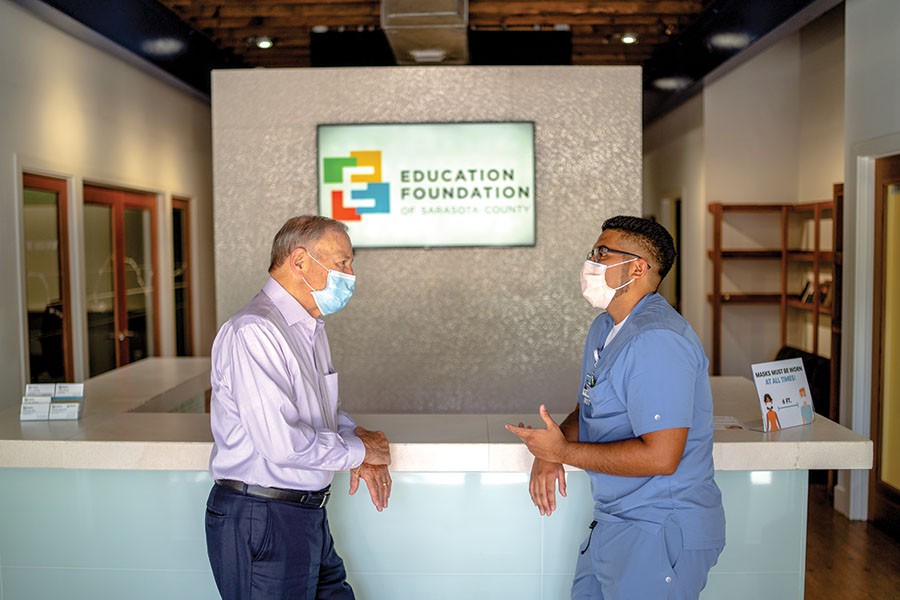
Lifetime of Learning
Geri Chaffee, a longtime volunteer in Manatee and Sarasota schools, has devoted herself to improving education—specifically for students in Spanish-speaking homes—for half a decade. A bilingual Hispanic woman, Chaffee helped establish and operate the hotline system in Manatee, and has spent years improving bilingual teaching instruction in schools.
After her own children were grown, Chaffee started volunteering her time to students and families at Tuttle Elementary School. She was stunned to realize that more than half of the students at the school come from homes in which the parents don’t speak English. Many of the parents immigrated to the United States specifically so that their children would receive a better education and learn fluent English. Yet, many students still fall behind in grade-level reading. Chaffee points to statistics from the 2018-2019 school year, which showed that 55 percent of Spanish-speaking students in Sarasota County schools were two or more grade levels behind in reading ability.
“When that’s the situation, they are not doing well in math or algebra either,” Chaffee says. “About 20 percent of 44,000 children in Sarasota schools are Hispanic, as are more than 30 percent of the 50,000 students in Manatee schools. That’s not an insignificant number.” Chaffee has become a regional expert on improving resources for bilingual students. She introduced regional studies showing that, if lessons in all subjects (including math) are given to Spanish native students in both Spanish and English, it can actually accelerate the learning rate for children and push them a grade level ahead of their single-language peers. Over the course of five years, Chaffee wrote a thesis on this topic for her master’s degree in education administration. In Sarasota, she is now moving ahead in launching Dreamers Academy—a charter school that will offer the first 100 percent bilingual education curriculum for a public school in the region.
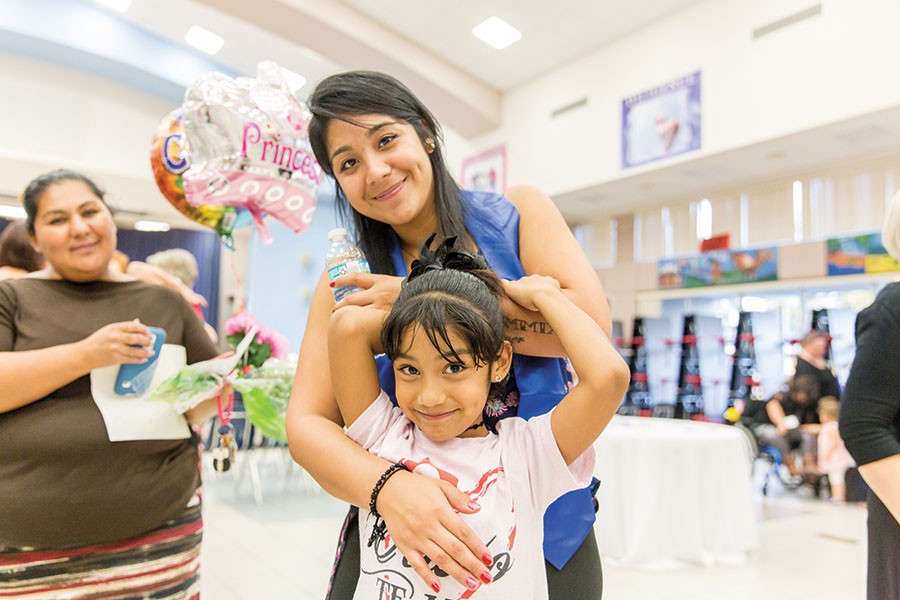
That’s just part of the effort to focus philanthropic efforts in the world of education on long-term learning. Kirsten Russell, the vice president of community impact for the Community Foundation of Sarasota County, says the mission for many dedicated grants and long-term funds remains on investing in education. Throughout the pandemic, officials at the Community Foundation resiliently continued a TwoGen program. This initiative was aimed at both improving the financial opportunities for working families and helping children in those households fight a summer slump in learning, which was potentially worsened as students prematurely left campus well before the end of the school year. Born from work with the Aspen Institute, the program started by combining some of its own efforts toward grade-level reading with simultaneous desires to improve the lives of working families in the region, often called a dual-generation or TwoGen approach. Years ago, the Community Foundation identified several schools with a high percentage of students who were on free and reduced lunch programs, and launched the lauded Eagle Academy program.
“A lot of parents haven’t had the opportunity to pursue their own hopes and dreams,” Russell says. “We work very closely with four schools through our parent-education navigators and help parents as they realize those dreams.” In doing so, the Community Foundation also helps provide educational support to students year-round to make sure they achieve their educational goals. With occupational training provided through this program, the Community Foundation has documented increases in family annual incomes by an average of $5,000.
“We’ve basically looked to really reignite the spark in the parents so they have aspirations for themselves and their kids,” Russell says, “and they are excited to be working alongside their kids. It kind of creates a spark in the child as well.” And that’s just one facet of the work being done to help education in Sarasota County. The Community Foundation also serves as the local leader for the Patterson Foundation. That county effort is part of a regional initiative headed up by the Patterson Foundation, which coordinates with United Way chapters in Manatee, DeSoto and Charlotte counties as well. Whether community leaders are hosting a poster-creation contest, which engaged 50,000 students in the spring, or providing free books to families in the region during the summer, their campaigns continue to focus on improving basic reading ability for students.
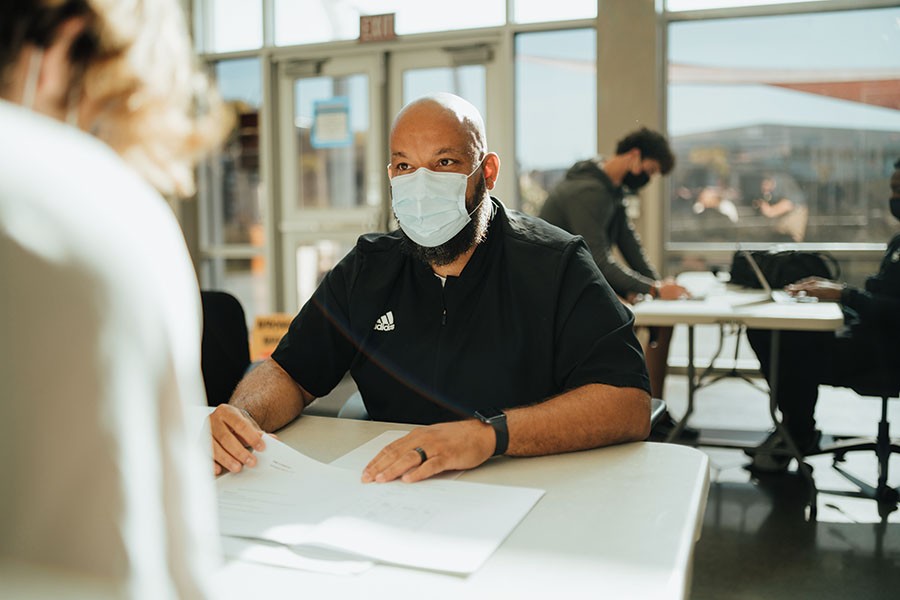
Because of the chronic absenteeism brought on by the pandemic, the effort to make sure students keep reading has become more challenging than ever. But, to make sure the consequences of this crazy year don’t set students back forever, it makes the mission all the more important. Beth Duda, the director of the Patterson Foundation’s Suncoast Campaign for Grade-Level Reading, says it is critical that students complete third grade with the capacity to keep up in reading with their peers nationally, it provides a foundation upon which all other learning builds.
“Especially this year, we understand the critical need to have children in school. But when students aren’t in school, it’s critical they continue to read in their free time,” Duda says. “The greatest reason for that is that children are in school for 14 percent of their year, if you look at 180 school days and 6½ hours of instruction they get, and hopefully they are asleep 33 percent of the time. That means they are awake and living about 50 percent of the time they are not in school. If our children are not succeeding, we have the opportunity to come around to children and their families and try and make a difference, not by squeezing one more thing beyond the 14 percent of their year, but by making their full life rich and literacy-filled.”
Nimble and Free
Even before the pandemic, educators had renewed a focus on mental health for students, realizing that the stability of young minds needed to be as high a priority as the knowledge crammed inside of them. The stress from the pandemic has only increased the need for that mission, education supporters say. Students struggle with the changes in education curricula, the isolation of missing friends they no longer see each day in class, or even the unexpected loss of loved ones to COVID-19.
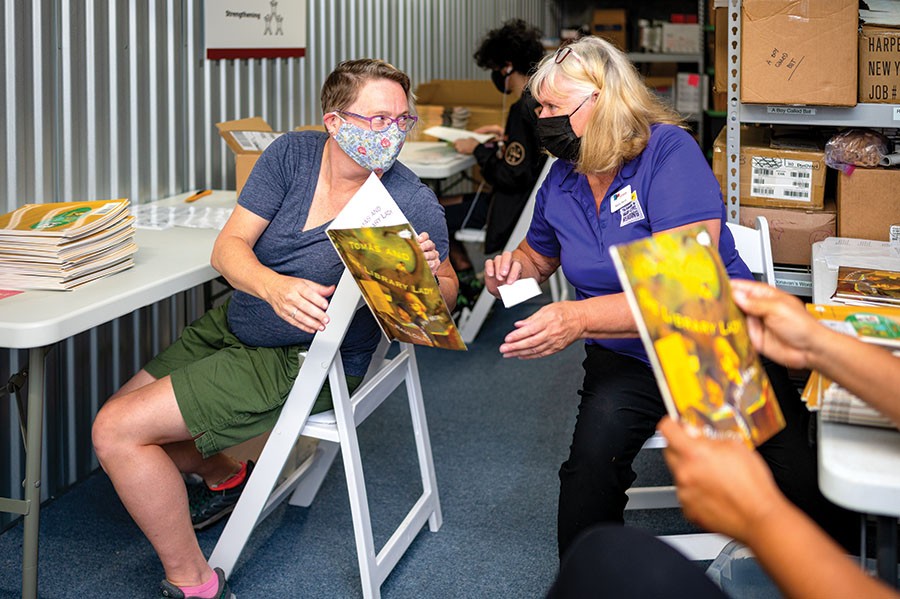
Jennifer Johnston, the senior community investment officer for the Gulf Coast Community Foundation, says this is an area where nonprofit organizations and local philanthropists can step in to provide needed assets to the schools. The Foundation has helped fund the [Here4You]th program to ensure that the support systems students need are readily available. The effort, which sends mental health professionals into schools, is a great example, she says, of how the nimbleness of the nonprofit world can address a need. “The power of philanthropy,” she says, “is being able to scale.”
When demand for a service rose faster than a government fiscal year, foundations were able to both fund immediate research into the appropriate response and deliver resources immediately to launch a pilot program. And the programs can also change to address shifts in the circumstances around them. [Here4You]th started with and maintains expertise in intervention for students dealing with substance abuse problems or having suicidal thoughts. It has grown to provide a number of different types of emotional support to students—a sort of mental health first aid service.
Initiatives like The Civility Squad, an animated program that teaches children how to treat one another, lives off of private donations funneled through the Gulf Coast Community Foundation. It is a critical resource for teaching students life lessons that are not included in textbooks.
The hope with many programs like this is proof of concept. Whether it’s the mental health intervention service from the Gulf Coast Community Foundation, success centers at the Education Foundation, or the two-generational approach at Eagle Academy, philanthropists hope to verify a need for the school district or state legislature to address in the future on a wider scale. Taking programs districtwide requires the deep pockets of the government. However, because of the cost, those who are spending public resources often need data to make the case that a program will produce results. “It’s about taking a multi-million investment from donors,” says Johnson, “and then working to institutionalize that.” SRQ
LaunchPad4U
The in-person counseling available to high school students hasn’t been a guaranteed service throughout the past year. That’s a big part of why the Education Foundation of Sarasota County set up a physical space in which students, whether enrolled in in-person or remote learning, can visit and prepare for their future. “We opened LaunchPad4U in the Rosemary District specifically to help provide a safe space for the high school students and parents,” says Jennifer Vigne, executive director of the Education Foundation. “It’s a place where they can find scholarship information, mentoring and even Wi-Fi access.” Following an interstellar theme, the locale also serves as a home for PLANit Sarasota—a collective group of teaching and youth service organizations dedicated to pointing students down the pathway to post-secondary education.
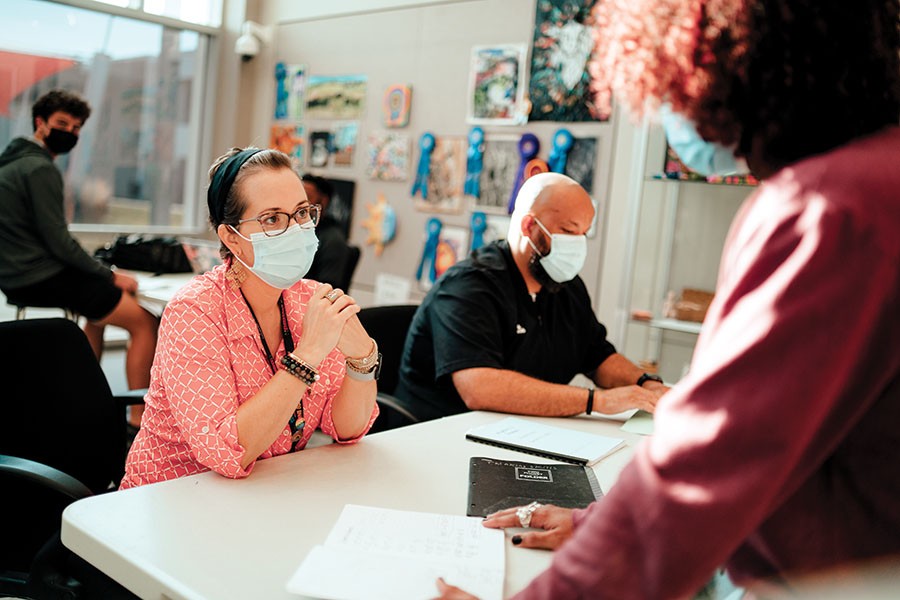
[Here4You]th
Surviving life as a teenager in normal times (even without a pandemic) can try the mental health of students. The [Here4You]th initiative makes sure students have the resources they need to survive their high school years intact. Unfortunately, there has been a rise in substance abuse and reported suicidal thoughts, both in this region and beyond, and all of that comes with a certain social stigma that makes matters worse. The Gulf Coast Community Foundation and the Charles & Margery Barancik Foundation joined forces to fund research on the scope of the problem and to develop an action plan for early intervention and crisis response. The focus is on keeping costs low for families that are in need of the services. A pilot program was launched at Sarasota High School and it has since grown to serve 10 schools in the region. “For a lot of students, what they really need is emotional support,” says Jennifer Johnston, the senior community investment officer at the Gulf Coast Community Foundation.
Eagle Academy / Parent University
The TwoGen philosophy promoted through a variety of Community Foundation of Sarasota County programs may best be illustrated by the successful Eagle Academy and Parent University offerings in Sarasota (above left and right images). For school-aged students, the focus is on avoiding any setbacks in learning, like the dreaded summer slump. But, while young learners focus on keeping literacy and math skills up year-round, parents can attend classes at the same time on English as a second language, financial literacy and building social capital—or even participate in book clubs, yoga classes and art lessons. Some classes put a special focus on introducing or advancing parents down career paths in nursing, construction, occupational therapy or other high-demand fields. The idea is to couple philanthropic efforts aimed at helping working families with improving educational resources for low-income students.
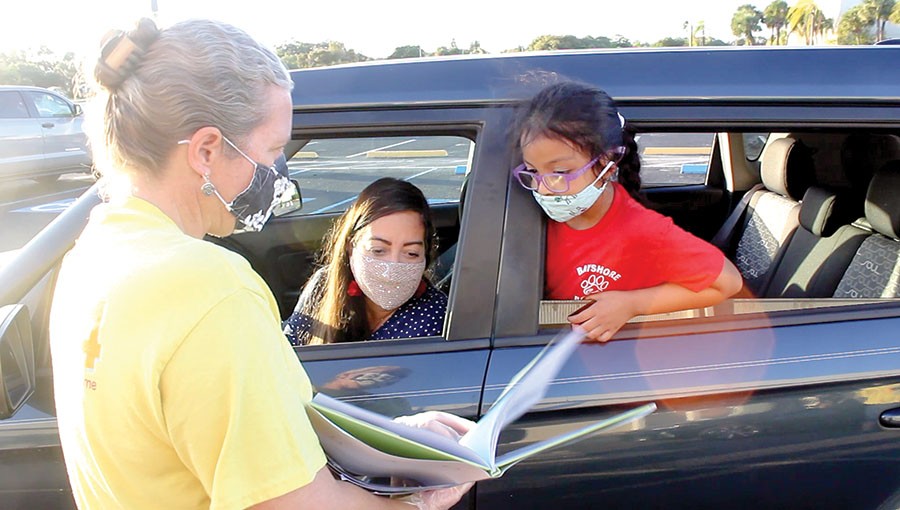
Soar In 4
Educational institutions frequently talk up the need to have students reading at grade level by the time they finish third grade (center left image). That’s no arbitrary deadline. Starting in fourth grade, book learning becomes a fundamental means for teaching science, social studies and, really, every subject. The Soar In 4 program, funded by the Manatee Community Foundation, introduces a curriculum developed—in part—with The Roskamp Institute to intervene with students as early as preschool. With outreach to 15 economically disadvantaged neighborhoods throughout the county, the effort targets students headed to Title I schools, engaging them through a monthly activity. In the time of COVID-19, events like drive-in storytelling times and video chats have made sure students can still benefit from resources while remaining socially distanced. Left: Luis Hernandez holding a Pete the Cat book as part of the Suncoast Summer Reading. Right: Carolina Franco of Patterson Foundation packs books.
Suncoast Summer Reading Challenge
Nothing gets kids engaged in an activity quite like competition. Not only does the chance to “race” against peers to finish a certain amount of learning provide motivation to young students, but it reminds youngsters that their peers care about their own education as well. Considering how the challenge helps shed the bookworm stigma, it feels appropriate that the Suncoast Campaign For Grade-Level Reading is launching “This Book Is Cool”--a web series with 100 episodes cut to inspire a love of reading. Students involved in the campaign will receive free books, purchased through the generosity of the Patterson Foundation. In Sarasota County, the program will be administered by the Community Foundation of Sarasota County, while the United Way chapters will oversee efforts in Manatee, Charlotte and DeSoto counties. Right: Volunteer Jannette Rodriguez helps the Patterson Foundation sort and pack books. Photo by Wes Roberts. Below: LaunchPad4U mentorship meeting.









